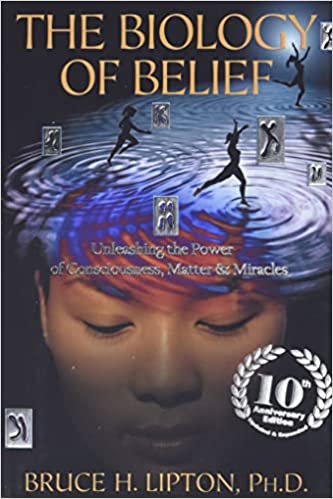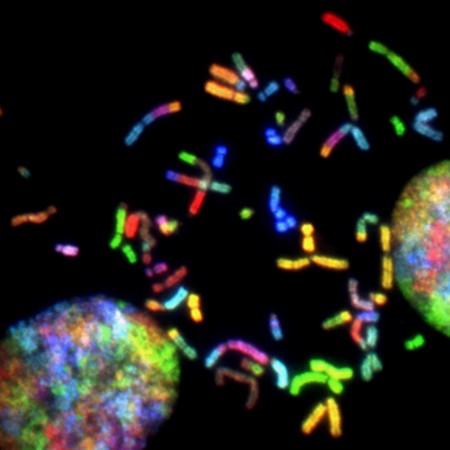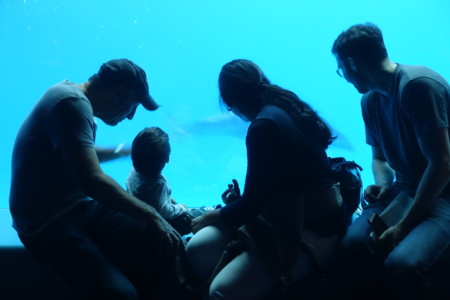 People who beat the odds of an incurable disease and survive longer than anticipated tend to forge a unique pathway to their wellness. While their journeys use different methods, the survivors opt for a course of action that refuses to accept the doctor’s dire diagnosis. To gain a better understanding of how thoughts and beliefs can affect one’s health, I read Dr. Bruce H. Lipton’s book, The Biology of Belief: Unleashing the Power of Consciousness, Matter & Miracles.
People who beat the odds of an incurable disease and survive longer than anticipated tend to forge a unique pathway to their wellness. While their journeys use different methods, the survivors opt for a course of action that refuses to accept the doctor’s dire diagnosis. To gain a better understanding of how thoughts and beliefs can affect one’s health, I read Dr. Bruce H. Lipton’s book, The Biology of Belief: Unleashing the Power of Consciousness, Matter & Miracles.
Using his background as a cell biologist and medical school professor, Dr. Lipton concludes that every cell is affected by one’s thoughts. While many of his innovative ideas that were formulated decades ago put Lipton at odds with his more traditional colleagues, Lipton persevered. Epigenetics, “the study of the molecular mechanisms by which the environment controls gene activity, is today one of the most active areas of scientific research.” (Page xxiv)
Throughout my lifetime, the controversy surrounding the nurture and nature theories have ebbed and flowed. Dr. Lipton interjects the concept of New Biology into this equation. This theory “casts life as a cooperative journey among powerful individuals who can program themselves to create joy-filled lives.” (xxvii) With the idea of New Biology, the focus shifts away from the concepts associated with nature and nurture to the conscious mind.
In Radical Remission: Surviving Cancer Against All Odds, Kelly A Turner provides examples of individuals who effectively used their minds to combat a dire prognosis. Lipton takes this idea a step further by providing scientific explanations explaining how our thoughts control the cells in our body. By reading through my overview of The Biology of Belief, glioblastoma patients and their care partners will gain a stronger appreciation of why a positive mindset is paramount when battling a deadly disease.

Chapter 1- Lessons from the Petri Dish: In Praise of Smart Cells and Smart Students
When talking about individual human cells, Lipton states that each of these
cells are imbued with intent and purpose; they actively seek environments that support their survival while simultaneously avoiding toxic or hostile ones. Like humans, single cells analyze thousands of stimuli from the microenvironment they inhabit. Through the analysis of data, cells select appropriate behavioral responses to ensure their survival. (Page 7)
This theory supports many cancer nutritionists who believe that it is important to focus on the relationship between the cancer cells and the terrain or the environment within the body. When the body is fed an inadequate diet filled with foods that create inflammation, there may be a greater likelihood for the cells to reform a tumor. Whereas diets with an abundant number of diverse phytonutrients may decrease inflammation, improve the function of the immune system, and potentially kill cancer cells.
After briefly discussing the theories associated with Charles Darwin, Jean Baptiste Lamarck, Timothy Lenton, as well as a few others, Lipton boldly asserts that
the genes we inherit from our mothers and our fathers are not our fate!” Lipton shares Martin A Nowak’s perspective that “life is not just a struggle for survival but also a snuggle for survival. (Page 20)
After being raised in an era when Darwin’s survival of the fittest was promoted in my public school and college science classes, it took a few minutes to absorb the implication of communal cooperation in evolution. Lipton makes this connection clearer when he talks about the National Institutes of Health’s Human Microbiome Project.
Researchers have found that human genes influence the genetics of the microbiome, and the microbiome’s genes (that make up 99 percent of the unique genes in our body!) regulate genes in our cells. (Page 21)
Using the work of Dr. Martin J. Blaser, Lipton draws attention as to how the declining diversity in the human microbiome, along with the increased use of prescribed antibiotics, has potentially caused the rise in chronic medical conditions like allergies, asthma, diabetes, and obesity. If the diversity and resiliency of the human microbiome regulates an individual’s wellness, it makes sense to avoid unnecessary antibiotics and to promote a varied, nutrient-dense diet.
If you agree with this scientific research, I suggest taking a moment to think about the foods that you consume every day. Are you relying on processed foods filled with sugar and additives or are you selecting a wide variety of fruits, vegetables, and whole grains?

Chapter 2- It’s the Environment, Stupid
Looking back to his graduate school days and the wisdom handed down by one of his professors, Irv Konigsberg, Lipton explains how ailing cells can be affected by their surroundings.
When I provided a healthy environment for my cells, they thrived; when the environment was less than optimal, the cells faltered. When I adjusted the environment, these ‘sick’ cells revitalized. (Page 25)
This theory stands in direct contrast to the idea that our genes control our lives. According to Lipton,
…single-gene disorders affect less than 2 percent of the population; the vast majority of people come into this world with genes that should enable them to live a happy and healthy life. (Page 27)
Lipton goes on to point out that even though certain genes may be linked to a particular disease, it doesn’t necessarily mean that the gene caused the disease. Genes become activated when something triggers them. The mechanism that turns the genes on and off also rewrites the DNA’s coded protein structure. Surprisingly, complex humans and more simple rodents do not differ much when it comes to their total number of genes. When this book was published, scientists had isolated about 19,000 human genes, approximately the same number as the Caenorhabditis worm. (Page 50)
While each species enters the world with a genetic blueprint, environmental factors, diet, stress, and emotions can alter their future path. Looking to lab experiments, Lipton illustrates how the environment affects the overall health of animals. When examining human populations, he cites studies stating,
The malignancies in a significant number of cancer patients are derived from environmentally induced epigenetic alterations and not defective genes. (Page 48)
A 2105 Stanford study
found that three quarters of the variations in the immune systems of identical twins (who share the same genome) were due to ‘noninheritable,’ environmental influences including exposure to microbes, toxins, diet, and vaccinations. (Page 49)
Near the end of the chapter, he discusses the relationship between telomeres, telomerase activity and longevity. While stressful life experiences may limit telomerase activity which is associated with a shorter lifespan, he singles out “exercise, good nutrition, a positive outlook on life, living in happiness and gratitude, being in service, and experiencing love, especially self-love” (Page 55) as ways to increase telomerase activity and improve longevity.
Based on the research studies included in this chapter, I am reminded of the significance of living a balanced life based on quality food, an active lifestyle, and a positive mindset that includes being grateful for living a purposeful life.
Are you focusing on your diagnosis or living your life?

Chapter 3-The Magical Membrane
Decades ago, I was taught that the nucleus was the most important part of a cell. Lipton altered this inaccurate perception when he stated, “Insight into the secret of life lies in understanding the elegantly simple biological mechanisms of the magical membrane—the mechanisms by which your body translates environmental signals into behavior.” (Page 58) When you consider that the membrane can only be visualized with the use of an electron microscope, it is hard to comprehend how this structure acts as a gateway that allows only some nutrients to pass into the interior of a cell. If the membrane is broken, the cell will perish. Smart cells band together and effectively use their membranes. Information coming from the outside environment is received by the membrane’s receptors and then passed along to effector proteins which control cell behavior.
As someone who has suffered from high cholesterol for decades, I was astounded by the facts Lipton shared about the use of statins.
Though statins accounted for $29 billion in U.S sales in 2013 alone, their war against cholesterol has barely had an impact on cardiovascular disease. At best, statin drugs lower the actual risk of heart attack by around 0.3 percent, while at the same time producing side effects in 15 percent to 40 percent of those using the drug. (Page 81)
Almost a decade later, I can only assume that these facts have remained unchanged. If so, the pharmaceutical companies continue to profit from people who would prefer to take drugs rather than to change their lifestyle. There is no doubt that many drugs effectively treat a wide variety of medical conditions. However, many other medications receive media hype and the medical community’s endorsement despite limited success.
When faced with an incurable disease such as glioblastoma, it is more challenging to determine if a prescribed drug, an off-label drug, or a supplement will be helpful or not. Since each person has the potential of responding differently, it is always best to ask your medical providers, nutritionists, herbalists, and naturopaths for their opinions. What may work for one person may not necessarily be appropriate for another.
Are you self-prescribing or are you seeking information from an alternative medicine provider and your oncology team?

Chapter 4- The New Physics: Planting Both Feet on Thin Air
Biologists usually rely on Newton’s laws for guidance rather than Einstein’s physics principles. To gain a better understanding of paranormal phenomena like spontaneous healing, unexplained medical events, and Eastern medicine’s concept of chi, Lipton examined some of the basic laws of physics.
Einstein revealed that we do not live in a universe with discrete, physical objects separated by dead space. The Universe is one indivisible, dynamic whole in which energy and matter are so deeply entangled it is impossible to consider them as independent elements. (Page 89)
Since biologists and medical researchers tend to focus on identifying a magic-bullet drug or cure, they usually dismiss the role of energy vibrations or the principles surrounding how matter and energy are intertwined. Perhaps that is one of the reasons why some oncologists do not advocate for the Optune device. It uses Tumor Treating Fields (TTFields) which are “low intensity, alternating electric fields that disrupt cell division through physical interactions with key molecules during mitosis in solid tumor cancers.” (Optune website)
The complex interaction between matter and energy is very different from a biomedical researcher’s linear approach. Lipton feels that these interactions between the body’s pathways offer a better explanation why prescriptive and over the counter drugs affect multiple areas of the body and usually attack symptoms rather than the source of the problem.
It is frightening to learn that “More than 120,000 people die from adverse effects of prescribed medications each year.” (Page 95) A 2003 study revealed “iatrogenic illness is actually the leading cause of death in the United States and that adverse reactions to prescription drugs are responsible for more than 300,000 deaths a year.” (Page 95) An iatrogenic illness is an ailment resulting from medical treatment.
Even though these statistics are alarming, few scientific research studies explore the benefits of complementary or alternative medicine practices. Far too often energy healing methods are considered unscientific. However, sometimes medical providers utilize quantum physics to heal patients. I have first-hand experience of one example. Several years ago, a few of my kidney stones were dissolved using high frequency vibrations. While this is an acceptable medical technique, there are many other alternative medicine procedures that have yet to receive approval from traditional doctors.
Despite the reluctance of the scientific community to accept non-traditional medical approaches to cure medical issues, a study showed that
83 million American adults spent $38 billion on complementary and alternative healthcare in the twelve months before the (National Health Interview) survey was published in 2007. (Page 115)
Glioblastoma patients who share their stories on social media platforms appear to be aligned with this statistic. Hopefully, more clinical trials and research will be directed to these non-traditional approaches so that patients and care partners can make decisions based on data rather than anecdotal stories.
What type of data or evidence are you using when making glioblastoma treatment decisions?

Chapter 5- Biology and Belief
The belief that there is a separation between the body and the mind dates to Rene Descartes 17th century ideas. Lipton, along with many other modern scientists, now believe that
Thoughts, the mind’s energy, directly influence how the physical brain controls the body’s physiology. Thought ‘energy’ can activate or inhibit the cell’s function producing proteins via the mechanics of constructive and destructive interference. (Page 119)
Beating the odds of an incurable disease often includes a positive mindset. Lipton agrees with this observation which was also documented in Radical Remission.
Buried in the exceptional cases are the roots of a more powerful understanding of the nature of life—‘more powerful’ because the principles behind these exceptions trump established ‘truths.’ The fact is that harnessing the power of your mind can be more effective than drugs you have been programmed to believe you need. (Page 119)
On the next page, Lipton turns his attention to terminal cancer patients who miraculously experience spontaneous remission. Despite their noteworthy journey, few researchers examine how they beat the odds.
More baffling is the reality of terminal cancer patients who have recovered their lives through spontaneous remission. Because such remissions are outside the bounds of conventional theory, science completely disregards the fact that they happen. Spontaneous remissions are dismissed as unexplained exceptions to our current truths, or simply misdiagnoses. (Page 120)
However, it should be noted that it takes more than a few positive thoughts.
It is important for our health and well-being to shift our mind’s energy toward positive, life-generating thoughts and eliminate ever-present, energy-draining and debilitating negative thoughts. (Page 121)
On the surface, this appears to be a relatively easy task to accomplish. However, Lipton discusses how the process involves the interdependency between the conscious and unconscious parts of the brain. Not everyone who exhibits positivity can beat the odds.
Our identities are housed in the conscious mind which allows us to shift from the past, present, and future while our unconscious mind is the source of our habitual behavior. Since our unconscious mind is more than a million times more powerful than the conscious mind, it is an uphill battle to wipe out negative messages programmed into our unconscious mind by stimulus-response behaviors that were acquired from our family and community in early childhood. These undesirable habits are not governed by reason or thinking. Self-defeating responses can be eliminated after a person uses their free will to control false perceptions.
People who are facing an incurable disease are often encouraged to take part in a clinical trial. Before agreeing to participate in a study, one should be aware that some results can be skewed by the placebo effect.
It inevitably disturbs pharmaceutical manufacturers that in most of their clinical trials the placebos, the ‘fake’ drugs, prove to be as effective as their engineered chemical cocktails. (Greenberg 2003) Though the drug companies insist they’re not trying to make it easier for the ineffective drugs to get approved, it is clear that effectiveness of placebo pills is a threat to the pharmaceutical industry.(Page 152)
From knee surgery to depression to Parkinson’s, studies have illustrated the powerful impact of the placebo effect. A more remarkable finding is that “even when people know they’re not getting a drug, the placebo pills still work.” (Page 134)
When examining the impact of positive thinking, it is equally important to look at how negative thoughts can affect one’s health.
…when the same mind is engaged in negative suggestions that can damage health the negative effects are referred to as the nocebo effect. (Page 136)
The nocebo effect is extremely relevant for people who are told by their doctors that they have a terminal illness with a limited lifespan.
If you choose to believe your doctor’s message, you are not likely to have much more time on this Earth. (Page 136)
Far too often, I read about people who give up after a doctor’s dire prognosis of a few weeks or months. While I understand the doctor’s obligation to advise a patient of the seriousness of his/her condition, a medical professional cannot say for certain when someone will pass away. I am thankful that my husband disregarded the doctors who placed a time limit on life.
To better understand the essence of this chapter, I found a passage that illustrates the importance of choosing a positive viewpoint.
You can filter your life with rose-colored beliefs that will help your body grow or you can use a dark filter that turns everything black and makes your body/mind more susceptible to disease. You can live a life of fear or live a life of love. You have the choice! But I can tell you that if you choose to see a world full of love, your body will respond ty growing in health. If you choose to believe that you live in a dark world full of fear, your body’s health will be compromised as you physiologically close yourself down in a protection response. (Page 138)
Lipton closes the original chapter with a quote from Mahatma Gandhi:
Your beliefs become your thoughts
Your thoughts become your words
Your words become your actions
Your actions become your habits
Your habits become your values
Your values become your destiny (Page 138)
The field of behavioral epigenetics blossomed after the publication of Lipton’s first edition. In the 10thanniversary edition, Lipton cited some of the pertinent research and findings. With regards to continuous stress,
Dr. Herbert Benson, famed Mind/Body Medical Institute Professor of Medicine at Harvard Medical School, has concluded that stress is responsible for up to 90% of all doctor office visits.” (Page 140)
While stress is indeed a major risk factor for disease, loneliness is a greater problem.
Dr. Steve Cole, an epigeneticist at UCLA’s School of Medicine, stated “Social isolation is the best-established, most robust social or psychological risk factor for disease out there. Nothing can compete.” (Page 140) While negative thoughts, stress, and loneliness may create health concerns, it is possible to take steps to reverse the ill effects of these situations. Meditation is one option to consider.
A recent study revealed that just eight hours of mindful meditation was sufficient to significantly change vital gene functions. Compared to controls, meditators exhibited a range of genetic and molecular differences that included reduced levels of pro-inflammatory genes and altered levels of gene-regulating machinery. These observed changes in genetic expression are associated with faster physical recovery from stressful situations and prove that mindful practice can lead to health improvement through profound epigenetic alterations of the genome. (Page 144)
Researchers continue to see the positive benefits of meditation.
Have you added meditation to your daily routine?

Chapter 6- Growth and Protection
Our bodies have both growth and protection mechanism that are necessary for survival. The stresses and fears associated with a hyper-vigilant lifestyle can potentially shut down these processes and adversely affect our health. Thus, it is not surprising to read that “Almost every major illness that people acquire has been linked to chronic stress.” (Page 155)
People who appreciate and understand the direct connection between stress and wellbeing are incentivized to let go of stressful memories. Despite this awareness, most fall back on bad habits.
People who live through negative and potentially devastating life experiences generally hold on to their fears and their stressful memories that compromise their health and longevity. (Page 158)
Lipton does not sugar coat the negative effects of long-term stress. When describing how stress leads to the dysfunction of the immune receptors, he cites a condition called Glucocorticoid Receptor Resistance. This condition is seen in “parents of children with cancer, spouses of brain cancer patients, persons reporting high levels of loneliness.” (Page 159-160)
To decrease the likelihood of illness, scientific studies advocate meditation, yoga, deep breathing, and prayers. According to Dr. Herbert Benson,
Many studies have shown that mind/body interventions like the relaxation response can reduce stress and enhance wellness in healthy individuals and counteract the adverse clinical effect of stress in conditions like hypertension, anxiety, diabetes and aging. (Page 160)
As a care partner, I am fully aware of the day-to-day stress associated with a glioblastoma diagnosis. Simultaneously, I know the importance of being attentive to my husband’s needs. I didn’t need to read Dr. Daniel Siegel’s studies to know that our loving relationship has a positive impact on my husband’s health. “Scientific studies of longevity, medical and mental health, happiness, and even wisdom point to supportive relationships as the most robust predictor of these positive attributes in our lives across the life span.” (Page 161) Dr. James Coan’s research demonstrates the importance of simply holding someone’s hand. (Page 161)
The stress associated with being a care partner can be intense, especially during the 24 hours prior to an MRI brain scan. However, these stressful moments are offset by the wonderful times we spend together enjoying life.

Chapter 7- Conscious Parenting
After spending most of my adult life raising four children, I have first-hand knowledge of how my attentiveness to our sons’ childhood years affected their maturity into productive adults. As a young mother, I realized that our home environment would affect our children’s capacity to attain their full potential. Young children carefully observe their environment and download the worldly wisdom offered by parents directly into their subconscious memory. As a result, their parent’s behavior and beliefs become their own.
Obviously, this connection is disrupted when children spend a considerable amount of time with other people. Uncaring adults who subject children to negative comments are causing undo harm to the child’s concept of self.
By the time children reach adolescence, their subconscious minds are chock-full of information that ranges from the knowledge of how to walk to the ‘knowledge’ they will never amount to anything or the knowledge, fostered by loving parents, that they can do anything they set out to do. (Page 174)
Thus, our subconscious mind developed while observing other people.
Challenges arise when our conscious mind wants to follow a different path from our unconscious mind.
The biggest impediments to realizing the successes of which we dream are the limitations programmed into our subconscious. These limitations not only influence our behavior, they can also play a major role in determining our physiology and health. (Page 179)
Wrestling with the subconscious to promote change is not easy to accomplish. Lipton suggests hypnosis, habituation, cognitive behavior therapy, and rapid-change energy psychology modalities.
By understanding how the subconscious mind can adversely affect behavior, patients and care takers can gain greater insight into ways to promote changes in negative behavior. By short circuiting negative behavior rooted in the subconscious mind, people can develop a healthier mindset.

Epilogue- Spirit and Science
It is rare to find a trained scientist who researches the connection between the spiritual world and the scientific world. Most people believe that the two realms are separate entities sharing no commonalities. Unlike many of Lipton’s science orientated colleagues, he continues to look for links that connect science and spirit. Lipton does not feel that metaphysical concepts are unscientific because they cannot be evaluated by traditional scientific methods.
Lipton uses the analogy of a “population of trillions of individuals living under one roof in a state of perpetual happiness” (Page 216) to describe healthy individuals whereas “cancer essentially represent homeless, jobless cells that are living off the other cells in the community.” (Page 216) Since humans are spiritual beings, they need love as much as they need food. (Page 219)
When Lipton added content for his 10th anniversary issue, he shared Dr. Harold G. Koenig’s research which shows the positive effects of spiritual beliefs. Whether you are fighting a virus or cancer, the immune system needs to address the illness.
Spiritual beliefs have a direct, positive influence on the activity of the immune and endocrine systems that are critical for health maintenance and disease prevention. Spiritual patients exhibit significantly better indicators of immune functions, such as higher white blood cell counts and antibody levels and experience significantly lower infection rates. They also exhibit lower levels of adrenal stress hormones, such as cortisol and epinephrine (secretions that directly repress the activity of the immune system) than nonspiritual patients. (Page 221)
Dr. Turner includes spirituality as one of her nine elements in Radical Remission.
Is spirituality part of your life?
Addendum
People who are looking for change often resort to focusing on positive thinking and willpower. Usually this is not enough to make significant changes. To dismantle self-limiting beliefs, Lipton has used PSYCH-K, a self-empowerment program created by Robert Williams, M.A. Dr. Jeffrey L Fannin, a neuroscientist, examined the effectiveness of this innovative treatment and concluded,
that the PSYCH-K belief modification process enhances our functionality by optimizing belief systems and brain function.” (Page 232)
I am unfamiliar with PSYCH-K.
If you have had a positive experience with this program, please feel free to share in the comment section below.

Concluding Thoughts
After completing The Biology of Belief as well as many other books, I am paying more attention to my daily thoughts and beliefs. I agree that our viewpoints have an impact on our overall health and wellbeing. While it is not possible to measure the positive benefit of spending time with grandchildren, our spirits soar after each of these special encounters. We also spend as much time as possible being outside and traveling.
Some may need to work harder to alter debilitating subconscious ideas that date back to childhood. It may be necessary to seek professional intervention to accomplish this task. However, everyone can eventually see their cup half full rather than half empty.
A positive viewpoint is not a magic bullet capable of curing a deadly disease. But positivity will help the patient and care partner cope with the day-to-day uncertainties of living with an incurable disease. Anecdotal stories, along with the research cited in this book, indicates that everyone’s cells can be positively and negatively impacted by his/her thoughts and beliefs. If given the choice, wouldn’t you rather increase your odds of survival by adapting a healthier lifestyle and positive outlook?
Related Posts
The Benefits of Exercise for Glioblastoma Patients
What have researchers discovered about glioblastoma patients who remain physically active after diagnosis? Read this post to find out.
Cancer Cookbooks and Glioblastoma
Are you looking for ways to improve the quality of life during chemo and radiation? Check out these useful cookbooks filled with easy to follow healthy recipes.
Should Glioblastoma Patients Investigate Radical Remission?
Anyone who is looking for ways to beat the odds, should read this.
Mark Your Calendar -Glioblastoma Awareness Day – July 21, 2021
To bring attention to Glioblastoma, Sandy highlighted the ability to embrace life after a glio diagnosis.
5 Ways to Improve Exercise Motivation
Do you avoid exercising? Here are a few tips to help you get motivated.
Celebrating Wedding Anniversary in Kauai, Hawaii
To celebrate their 46th wedding anniversary and life, Sandy and Ira explored Kauai.
Spring Getaway to Captiva Island, Florida
A late spring getaway took us to romantic and picturesque Captiva Island.
Grand Hyatt Vail Healthy Cuisine
Yes, you can maintain a healthy diet while traveling.
Tackling the Back Bowls at Vail While Media Guests at the Grand Hyatt Vail
Can you believe that until spring 2021, I had never skied at Vail? Thanks to a media trip hosted by the Grand Hyatt Vail, Ira and I explored this amazing terrain. Our youngest son, Jordan, led the way to their famous back bowls.
While Ira was undergoing chemo, we went horseback riding, snowshoeing, and learned archery at Vista Verde Ranch, a luxury dude ranch near Steamboat, Colorado.
New Year’s Tradition at Keystone Resort
Glioblastoma and chemo did not stop Ira from skiing more than 20 times with glioblastoma.
BIO
Sandra Bornstein is the author of May This Be the Best Year of Your Life. Sandra’s memoir highlights her living and teaching adventure in Bangalore, India. She was a licensed Colorado teacher who taught K-12 students in the United States and abroad. Sandra also taught college-level courses at Front Range Community College and the University of Colorado-Boulder.
In addition to reviewing books and interviewing authors, Sandra is an award-winning author and lifestyle and travel journalist. Many of Sandra’s travel stories appear on the For Readers Page. To follow Sandra’s travel adventures, visit TheTravelingBornsteins website.

Connect with Sandra